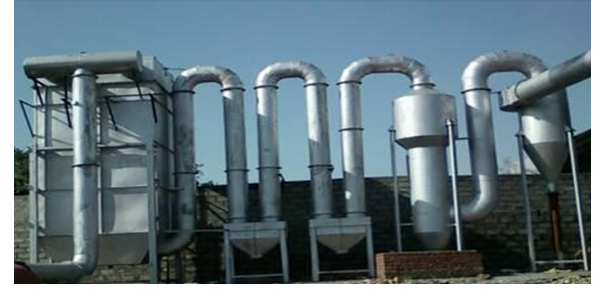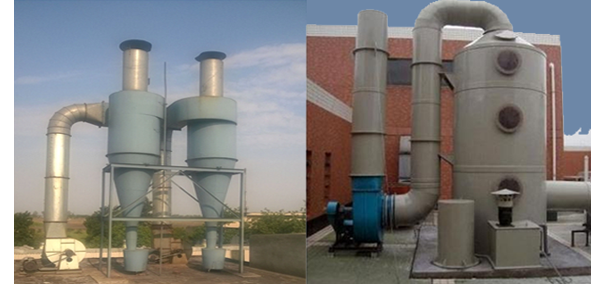Air Polution Control System (APCS)
The selection of the appropriate control technology is determined by the pollutant collected, the stationary source conditions, and the control efficiency required. In some cases, pollutant emissions can be reduced significantly through process modifications and combustion controls. However, in most instances, some form of add-on pollution control equipment is installed in the ductwork (or flues) leading to the smoke stack to meet current allowable emission limits. Common methods for eliminating or reducing gaseous pollutants include:
- Destroying pollutants by thermal or catalytic combustion, such as by use of a flare stack, a high temperature incinerator, or a catalytic combustion reactor;
- Changing pollutants to less harmful forms through chemical reactions, such as converting nitrogen oxides (NOx) to nitrogen and water through the addition of ammonia to the flue gas in front of a selective catalytic reactor; and
- Collecting pollutants using air pollution control systems before they reach the atmosphere.
- Electrostatic precipitators (wet and dry types)
- Fabric filters (also called bag houses),
- Absorption tower,
- Wet scrubbers, and
- Cyclones (or multiclones).
In many cases, more than one of these devices is used in series to obtain desired removal efficiencies for the contaminants of concern. For example, a cyclone may used to remove large particles before a pollutant stream enters a wet scrubber.



